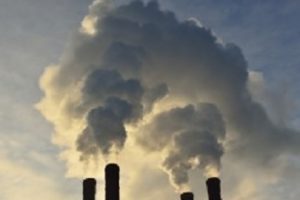Following its Clean Air Act Section 112 residual risk and technology review (RTR) of the National Emissions Standards for Hazardous Air Pollutants (NESHAP) for publicly owned treatment works (POTWs), the EPA has determined that the technology-based standards in the existing NESHAP protect the public health with an ample margin of safety and that no developments in practices, processes, and control technologies were identified, which warrant revisions to the standards for this source category. Consequently, the final RTR rule contains no revisions to existing emissions limits.

The final rule does contain several nontechnical revisions affecting NESHAP’s applicability criteria; emissions during periods of startup, shutdown, and malfunction (SSM); initial notification requirements for existing Group 1 and Group 2 POTWs; and electronic reporting for new Group 1 POTWs.
Group 1 and Group 2 POTWs
In 2002, the 1999 rule was amended to define the POTW source category as one consisting of new and existing POTW treatment plants that are located at a POTW that is a major source of hazardous air pollutant (HAP) emissions and that meets the criteria for development and implementation of a pretreatment program as defined by 40 CFR 403.8 under the Clean Water Act (CWA). Also, in 2002 NESHAP put affected POTWs into two subcategories – industrial and non-industrial. The amendments defined an industrial POTW as a POTW that accepts a waste stream regulated by another NESHAP and provides treatment and controls as an agent for the industrial discharger. An industrial POTW must meet the requirements of the POTW NESHAP whether or not it is itself a major source of HAPs. In contrast, a non-industrial POTW was defined as a POTW that does not meet the definition of an industrial POTW. A non-industrial POTW must be a major source of HAP to be subject to the 2002 POTW NESHAP.
In the final RTR rule, the EPA renames the subcategories – from industrial to Group 1 and from non-industrial to Group 2.
According to the Agency, the name changes for the subcategories should remove any confusion that could have been caused by the previous subcategory names because POTWs in both subcategories treat wastewater from industrial users. The key difference between Group 1 and Group 2 is that a Group 1 POTW acts as an agent for an industrial user by accepting and controlling the industrial user’s waste stream regulated under another NESHAP. By contrast, a Group 2 POTW may treat the waste stream from an industrial user but does not act as the industrial user’s agent to comply with another NESHAP.
Clarifications
The final RTR rule also:
- Clarifies that any major source POTW that meets the general requirements for development and implementation of a pretreatment program under the CWA is subject to the rule.
- Clarifies that initial notification requirements apply to both Group 1 and Group 2 POTWs; this requirement was not included in the 2002 NESHAP.
- Clarifies that all provisions of the NESHAP apply during periods of SSM.
- Requires that new POTWs must electronically submit all annual reports and certain performance test reports.
13 Facilities Affected
Based on the responses to a 2015 information collection request, the 2011 and 2014 National Emissions Inventory (NEI), and public comments received, 13 POTWs are engaged in the treatment of industrial wastewater and are currently subject to the POTW NESHAP. Two of these facilities are considered Group 1 POTWs while the remaining 11 are considered Group 2 POTWs. All 13 currently subject to the POTW NESHAP have already met the notification requirements for existing Group 1 and Group 2 POTWs, says the EPA, which adds that it is not currently aware of any planned new Group 1 or Group 2 POTW that will be constructed or any existing Group 1 or Group 2 POTW that will be reconstructed.
The final RTR rule was published in the October 26, 2017, FR and took effect upon publication.
